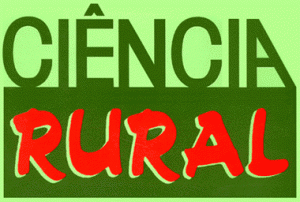Maria Luiza De Grandi, journalist of Ciência Rural, Santa Maria, Rio Grande do Sul, Brazil.
Carolina Briano-Rodriguez, Division de Laboratórios Veterinários Miguel C. Rubino- Laboratório Regional Este Treinta y Tres (MGAP), Treinta y Tres, Uruguay.
The Holstein Friesian bull breed, popularly known as Holstein, of North American origin, is widely used around the world, mainly for milk production. In Uruguay, dairy production based on the Holstein breed is one of the most important sectors of the country’s economy, but genetic disorders in Holstein cattle have been a problem, compromising the sustainability of milk production (RODRÍGUEZ -MARTÍNEZ et al., 2008; KELLY, L., et al. 2012).
Researchers from the Division de Laboratórios Veterinários Miguel C. Rubino (MGAP), in partnership with the Faculdade de Veterinária da República (UDELAR) and the Instituto Nacional de Investigación Agropecuária (INIA) developed the article Lethal and semi-lethal mutations in holstein calves in Uruguay, published in the journal Ciência Rural (vol. 51, no. 7). The objective of this research was to investigate the presence and spread of lethal and semi-lethal alleles causing embryonic death, abortions, fetal malformations and neonatal diseases in Holstein calves.
To achieve the objective, the researchers used the GeneSeek customized Genomic Profiler -GGP- Bovine 50K BeadChip on 383 Holstein calves, between one and thirty days old, from 27 farms located in the main dairy regions of Uruguay. These blood samples were obtained in 2016 as part of a larger-scale epidemiological study (SCHILD et al., 2020). GeneSeek’s technology utilizes Illumina Infinium chemistry, with approximately 50,000 unique nucleotides assayed per sample. “This study demonstrates for the first time the presence of nine different lethal and semi-lethal mutations in the Holstein-Friesian breed in Uruguay”, explains scientist Carolina Briano-Rodriguez.
The survey results showed a high prevalence of carriers (85%) and calves (21%), including one or more of the following lethal alleles: Bovine Leukocyte Adhesion Deficiency (BLAD) (4); complex vertebral malformation (8); brachispine (13); cholesterol deficiency (10); syndactyly (16); Dutch haplotypes HH1 (17), HH3 (12), HH4 (4) and HH5 (1), most of which had never been previously reported in Uruguay.
The research, developed in Uruguay, draws attention to hereditary diseases. “These diseases should be studied, including as differential diagnoses/causes of embryonic loss or fetal mortality, stillbirths and malformed or immunosuppressed calves”, highlights Carolina. “The diagnosis allows the implementation of tools such as directed mating, elimination of low-value animals, etc., which minimize prenatal losses, estimated at more than 6,000 pregnancies/year in Uruguay”. Innovative in its field, the research reiterates the importance of genomic monitoring of animals. “Genomic monitoring of carrier animals is necessary to prevent the spread of lethal and semi-lethal alleles in the Holstein cattle population, determine their impact on dairy cattle fertility and reduce economic losses to dairy farming”, concludes the scientist.
References
KELLY, L., et al. Diagnóstico molecular de enfermedades hereditarias bovinas en el Uruguay. Veterinaria (Montevideo). 2012, vol.48, no.188, pp. 3-11 [viewed 20 June 2022]. Available from: http://www.revistasmvu.com.uy/index.php/smvu/article/view/208
RODRIGUEZ-MARTINEZ, H., et al. Reproductive performance in high-producing dairy cows: can we sustain it under current practice. IVIS Reviews in veterinary Medicine. 2008, vol. 1, no. 108, pp. 1-23 [viewed 20 June 2022]. Available from: http://urn.kb.se/resolve?urn=urn:nbn:se:slu:epsilon-1-164
To read the article, access
BRIANO-RODRIGUEZ, C., et al. Lethal and semi-lethal mutations in Holstein calves in Uruguay. Cienc. Rural [online]. 2021, vol. 51, no. 7, e20200734 [viewed 20 June 2022]. https://doi.org/10.1590/0103-8478cr20200734. Available from: https://www.scielo.br/j/cr/a/vfbVrVnm8ScGgggSfpYNzSb
External links
Ciência Rural – Social media: Twitter | Instagram | Facebook
Ciência Rural: http://coral.ufsm.br/ccr/cienciarural/
Ciência Rural – CR: https://www.scielo.br/j/cr/
Como citar este post [ISO 690/2010]:
















Recent Comments